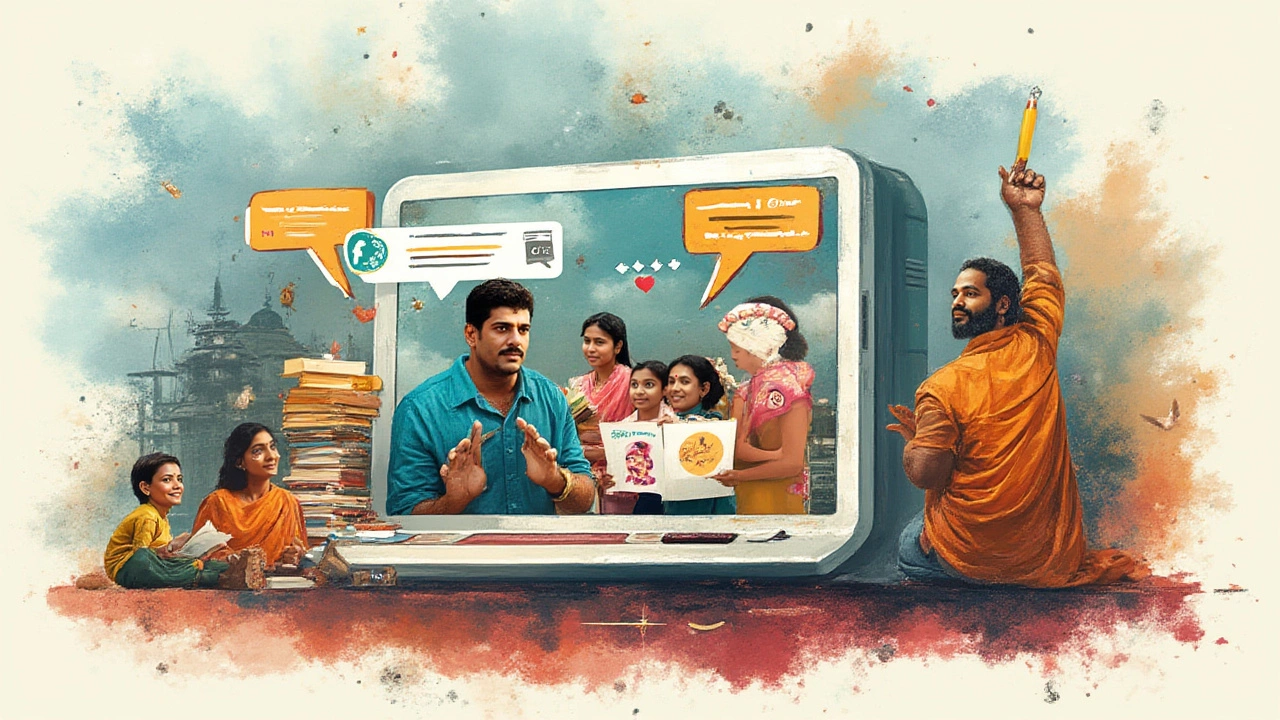Remember when the phrase “going online” felt like a special activity instead of a non-stop backdrop to daily life? Yeah, that’s ancient history. Whether you’re just doomscrolling or actually learning something new, online platforms are now tangled into nearly everything you do. But not all online platforms are created equal. There are three main types you bump into every single day—even if you don’t notice it. Each has its own vibe, purpose, and weird quirks. Ever scrolled through your social feed while ordering gadgets and squeezing in an online course during lunch? You’ve basically toured the main kinds of digital hangouts without even trying. Let’s break down what sets each type apart (and toss in a few surprises you’ve probably never thought about).
Social Media Platforms: Where Attention Reigns
Social media platforms are the digital playgrounds of the internet. These are where everyone—from your grandma to your dog (in my case, my dog Paco actually has more followers than I do)—posts, likes, and slides into DMs. Most folks lump all socials together, but each one has its own unique job. Facebook goes for connection, Instagram’s about curation, Twitter (well, X and its parade of drama) runs on real-time speed, and then you've got TikTok just being pure creative chaos.
The main goal? Keep you glued to your screen. According to 2024 data from DataReportal, over 62% of the world is using social networks, spending an average of 2 hours and 23 minutes per day on them. If you slept through media theory class, here’s all you need: social platforms are twentieth-century TV but personalized, always on, and with you as the unpaid star. But they’re not just for fun—millions of businesses run entirely through socials. From indie jewelry makers using Instagram Reels to the mighty meme accounts pushing politics, these platforms shape public opinion (and how many people think pineapple belongs on pizza).
Want a pro tip? Don’t get sucked into the “numbers game.” Follower counts aren’t everything. The real value is in engagement—actual comments, shares, conversations, and trust. If you’re looking to build a brand or become the next viral dog owner (Paco’s spot is taken, sorry), focus on community and realness. Algorithms crave fresh, authentic content. That could mean goofy behind-the-scenes videos, or just being honest. Audiences today have super sensitive “BS detectors.”
Here's a breakdown of the big players as of July 2025:
| Platform | Active Users (Billion) | Main Use |
|---|---|---|
| 2.9 | Networking, Groups, Events | |
| YouTube | 2.5 | Video Sharing, Tutorials |
| 2.4 | Messaging, Groups | |
| 2.4 | Photos, Reels, Stories | |
| 1.3 | Messages, Mini-Apps | |
| TikTok | 1.2 | Short-form Video |
If privacy is your thing, get good at using “Close Friends” lists, vanish mode (Instagram DMs), or encrypted chats. If you’re a creator, keep an eye on changes to the Terms of Service—these platforms swap rules faster than my dog Paco shreds a stuffed animal.

Educational Platforms: Learning, Anywhere, Anytime
Imagine cramming an entire library, a university, and a science lab into your phone or laptop. Educational platforms do just that, except you never have to fight for a seat or find parking. This is where things get interesting: since the big pandemic shake-up in 2020, online learning has skyrocketed. Platforms like Coursera, Udemy, and Khan Academy have put millions of courses just a click away. In 2024, the global e-learning market shot past $460 billion, with no sign of slowing down. These platforms cater to almost everyone—from 8th graders, to adults training for a career switch, to retired folks just curious about astronomy (Paco probably just wants a course on “Advanced Squirrel Studies”).
What actually counts as an educational platform? Not just video lectures. The best ones have interactive quizzes, real instructor feedback, discussion boards (where the real magic—and heated debates—happen), and even hands-on coding environments if you're learning to program. Then there’s gamified learning, think Duolingo’s streaks and badges. There’s something about not wanting to lose your Spanish streak that makes you suddenly fluent in food vocabulary. VR learning experiences are also heating up. For example, students at Stanford can now use VR headsets to do simulated lab work or explore Roman ruins. The point is, the right educational platform turns learning into a ritual—something you don’t just do, but look forward to.
Feeling lost in the crowd? Pro tip: start small. Don’t try to binge-watch a whole 40-hour course in one weekend. Pick a lesson, take notes (seriously, handwritten notes help), and join discussion forums if you can. Connecting with other learners not only keeps you accountable, it makes tough bits less lonely. Also, look for platforms that will give you a certificate or digital badge you can slap on LinkedIn—these little signals are shortcuts to getting noticed by employers. Here’s a table with some top names and what they’re awesome for:
| Platform | Main Focus | Key Feature | Status in 2025 |
|---|---|---|---|
| Coursera | University-grade Courses | Professional Certificates | 87M+ learners |
| Udemy | Hobby to Advanced Skills | Affordability | 70M+ learners |
| Khan Academy | K-12 Support | Free Forever | 20M+ users/month |
| Duolingo | Languages | Gamified Learning | 72 languages, 500M+ downloads |
| LinkedIn Learning | Professional Skills | Industry Endorsements | Over 16,000 courses |
Watch out for hidden costs. Some platforms love “free trials” that turn into paid subscriptions, so always check the fine print. And if you find a great instructor, stick with them for other topics—you’ll learn faster when you trust the teaching style.

E-commerce Platforms: Turning Clicks into Cash
Buying and selling on the internet might sound obvious now, but e-commerce platforms have reinvented how we shop, what we buy, and even how businesses start. Amazon alone accounted for roughly 37% of all online retail in the US in 2024. That's not just money changing hands—it's entire industries flipping upside down. And we’re not just talking massive global storefronts. E-commerce covers everything from single-person Etsy shops to sprawling B2B marketplaces like Alibaba. If you've ever compared prices on your phone while waiting at a store checkout, you’ve seen the power in action. It's like carrying an entire shopping mall in your pocket, minus the pretzel smells and escalator drama.
The appeal? Convenience and variety. You want shoes in a color no store carries locally? Check e-commerce. Need a specialty pet food (hi, Paco)? Order online and have it at your door in days, sometimes hours. Sending a gift abroad? Sorted, done, wrapped. In 2025, convenience rules. But it’s the rise of user reviews, transparent returns, and speedy delivery that made e-commerce beat out brick-and-mortar for many shoppers. Plus, small businesses can compete with giants—if they know their niche and build loyal customers.
Here’s a quick pulse check on who’s leading the charge and what makes them unique:
| Platform | Main Focus | Active Sellers | Yearly Revenue (2024) |
|---|---|---|---|
| Amazon | General Market | 9.7M+ | $574B |
| eBay | Auctions & Used Goods | 17M+ | $10.1B |
| Etsy | Handmade & Vintage | 7.5M+ | $2.7B |
| Alibaba | Wholesale/B2B | 10M+ | $128B |
| Shopify | Independent Stores | 2.1M+ | $7.1B |
If you’re thinking about getting into e-commerce, remember this: successful shops almost never start big. The key is finding a weirdly specific audience, treating every buyer like a VIP, and using every free tool (like social proof and e-mail alerts) to stay visible. Triple check the fine print around fees, shipping charges, and refund policies—it’s bad for business (and your sanity) to be surprised by unexpected costs. And be careful with your data. Security breaches are unfortunately common, with nearly 27% of global consumers experiencing some sort of e-commerce fraud in the last 12 months. Use strong passwords, turn on two-factor authentication, and avoid deals that look too good to be true.
If you’re a buyer, don’t just chase discounts. Look at seller ratings, read reviews (especially photos!), and watch for secure payment icons. Trust your gut. If something feels scammy, it probably is. Oh, and keep an eye out for limited-time drops and restocks—sometimes the best finds sell out in minutes. See a flash sale? That’s not just marketing hype. I once missed a leash for Paco that sold out in under ninety seconds. True heartbreak.
